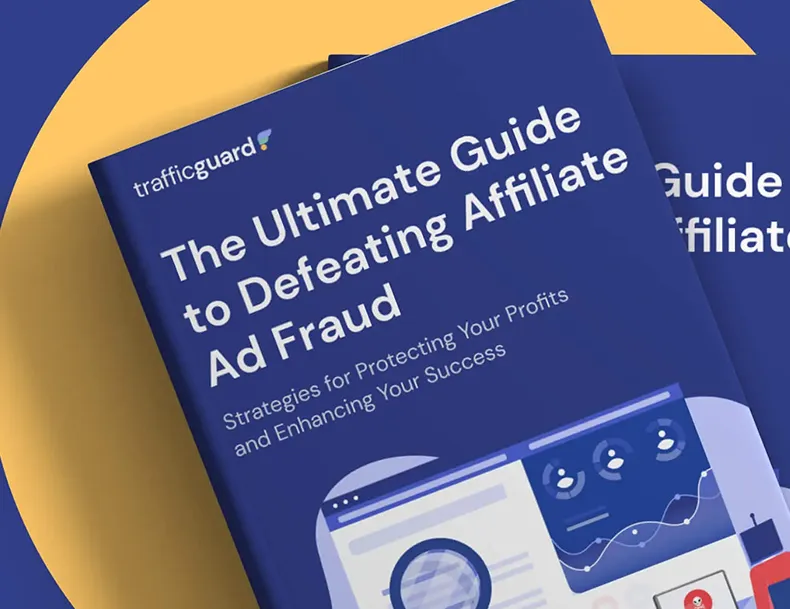Affiliate Fraud Explained: Your Guide to Click Fraud Prevention and ROAS Protection

Affiliate marketing has become one of the most widely used channels for advertisers, with research showing that more than 80% of brands use affiliate programmes to drive new customers. The appeal is obvious: affiliates bring immediate reach, access to purchase-ready audiences, and faster scale without heavy resource investment.
But there is a hidden cost. Fraudsters have learned how to exploit affiliate channels, siphoning budgets with tactics designed to trick attribution models. The result is wasted spend, polluted data, and inflated commissions that eat into return on ad spend (ROAS).
This blog breaks down everything you need to know about affiliate fraud. We’ll explain how it works, the industries most at risk, and the impact it has on campaigns. Most importantly, we’ll show you how click fraud prevention software can stop fraud before it drains your budget.
What is affiliate fraud?
Affiliate fraud happens when partners use deceptive methods to claim commissions they haven’t earned. Unlike direct ad placements, affiliate campaigns are harder to control because they involve third-party operators who can mask their activity.
At its simplest, the model is: fake the click, claim the conversion, get paid. The advertiser’s budget is wasted, and genuine traffic signals are distorted.
Learn how TrafficGuard protects affiliate channels.
How does affiliate fraud work?
Fraudsters use increasingly sophisticated methods to blend in with legitimate traffic. The most common include:
- Cookie stuffing – dropping cookies on a user’s browser without consent, so the affiliate gets credit for conversions they didn’t drive. Watch our short video on cookie stuffing.
- Domain spoofing – running multiple sites and identities to hide large-scale fraud and reappear as “new” partners when banned. See our guide on domain spoofing.
- Compliance fraud – bidding on your own branded search terms or sending traffic that breaks programme rules, while still claiming payouts. Watch our explainer video on compliance fraud.
Each of these tactics misattributes conversions, rewards fake engagement, and makes it nearly impossible for advertisers to see the real value of their affiliate spend.
What is the impact of affiliate fraud?
The most damaging effect is on ROAS. Budgets are drained by fraudulent commissions, while data used for optimisation is skewed. Campaigns appear to perform, but growth stalls because conversions are not genuine.
Case study: Global entertainment platform
A leading entertainment company suspected compliance fraud, with affiliates bidding on their branded keywords. With TrafficGuard for Affiliate, they uncovered that 25% of their affiliate traffic was invalid. By invalidating fraudulent clicks in real time, they prevented payouts for fake traffic and reclaimed significant budget.
Case study: Global betting corporation
A betting operator discovered that almost 100% of traffic from a major affiliate partner was fraudulent, dominated by click spam and misrepresented impressions. By integrating TrafficGuard’s click fraud protection, the operator achieved a 26x ROI and redirected wasted spend into acquiring genuine customers.
A well-known industry example, The Honey Trap, revealed how large-scale cookie stuffing schemes manipulated attribution systems to steal commissions from legitimate affiliates. It showed how even established brands can become targets when fraud prevention measures are not in place.
Watch how affiliate fraud impacts brands.
Which industries are most at risk?
Affiliate fraud affects every vertical, but three stand out:
- Sports betting and iGaming – Nearly 44% of gambling traffic is invalid, with fraudsters exploiting bonus-driven offers like free bets and spins.
- Financial services – High-value conversions make banking and fintech affiliates prime targets.
- eCommerce – Heavy reliance on affiliates and paid search leaves retailers exposed to fake clicks, bots, and non-genuine engagement.
Using affiliate advertising channels in your marketing mix? Great choice, they can help you reach a huge number of potential customers with minimal effort from your team. But fraudsters love them just as much. Budget-breaking bots and bad actors are quick to exploit affiliate platforms, and the damage to ROAS can be severe.
If you’re currently using affiliate marketing channels, or want to explore them but are wary of fraud, explore our affiliate fraud prevention strategies for marketers. It explains how fraud operates across third-party platforms, its impact on performance, and the tools you can use to protect your campaigns.

How do you stop affiliate fraud?
Relying on after-the-fact detection is no longer enough. Once fraudulent clicks and conversions enter attribution, they skew bidding and consume budget. The solution is real-time affiliate fraud prevention.
TrafficGuard for Affiliate provides protection across the funnel by verifying engagement before attribution. Key benefits include:
- Identifying affiliate partners delivering the most invalid traffic
- Preventing fake clicks and misattributed conversions from being paid out
- Enforcing programme compliance with custom traffic filters
- Safeguarding ROAS by ensuring only genuine conversions are rewarded
FAQs & Key Takeaways
1. How can I tell if affiliate traffic is fraudulent?
Watch for unusual patterns such as sudden traffic spikes, very high click-to-conversion ratios, or affiliates driving irrelevant audiences. Other red flags include suspicious IP addresses or partners bidding on your branded search terms. Tools such as TrafficGuard make these anomalies visible in real time through detailed traffic validation and partner-level analysis.
2. Why is affiliate fraud harder to manage than direct ad fraud?
Affiliate programmes involve multiple independent partners operating across different networks. This limited visibility allows bad actors to exploit attribution systems through methods such as cookie stuffing and domain spoofing. Real time affiliate fraud prevention gives advertisers full transparency across every partner and channel, making it easier to identify and stop fraudulent activity.
3. How does affiliate fraud prevention protect your campaigns in real time?
TrafficGuard’s affiliate fraud prevention solution stops invalid traffic at the source, ensuring advertisers only pay for genuine results. It integrates seamlessly with affiliate marketing platforms to verify partner activity and provide real time, granular reporting. With custom filters and automated protection, it blocks fraudulent behaviour such as bot clicks, click spam, and cookie stuffing. By delivering transparency and clean performance data, TrafficGuard helps businesses protect their ad budgets, maximise return on ad spend (ROAS), and build fair, trusted relationships with high value affiliates.
4. Which affiliate fraud prevention software is best for advertisers?
The most effective affiliate fraud prevention tools provide real time monitoring, automated blocking, and seamless integration with affiliate networks. TrafficGuard’s affiliate solution offers multi point validation across the customer journey, ensuring advertisers only pay commissions for genuine engagement.
5. How does affiliate fraud affect ROAS and campaign performance?
Fraudulent clicks and fake conversions waste budget and distort data used for optimisation. Over time, this lowers return on ad spend (ROAS) and damages decision making. Preventing affiliate fraud keeps data clean, improves optimisation accuracy, and allows more of your budget to reach real customers.
6. Does affiliate fraud impact SEO or organic marketing performance?
Indirectly, yes. Fraudulent traffic inflates engagement metrics, which can mislead optimisation strategies across both paid and organic channels. Maintaining clean, validated traffic helps marketers make accurate decisions and maintain overall campaign efficiency.
7. What industries face the highest risk of affiliate fraud?
Sectors with high payouts or rapid customer acquisition goals such as sports betting, financial services, travel, and eCommerce face the greatest risk. Fraudsters target these industries because of their high value commissions and large affiliate ecosystems.
8. How can advertisers prevent affiliate fraud before it starts?
The best defence is prevention. Use affiliate fraud prevention software that validates every interaction in real time, enforce clear compliance rules for partners, and regularly audit affiliate traffic. TrafficGuard’s affiliate fraud prevention blocks invalid activity before attribution, ensuring your spend goes only to legitimate sources.
Get started - it's free
You can set up a TrafficGuard account in minutes, so we’ll be protecting your campaigns before you can say ‘sky-high ROI’.
Subscribe
Subscribe now to get all the latest news and insights on digital advertising, machine learning and ad fraud.








